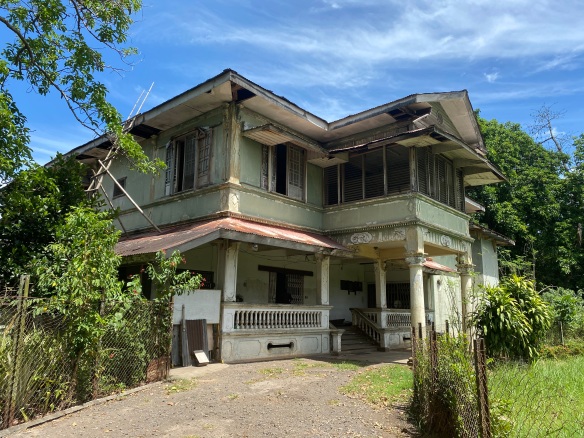
Penman for Monday, March 30, 2020
MORE THAN a year ago, on September 3, 2019, I wrote a column-piece titled “Meaning in the many,” in which I thought aloud about why so many young and often bright people were committing suicide or exhibiting a troubling emotional fragility. Was it, I surmised, a generational thing? Were we oldies somehow made of sterner stuff, or was that just an illusion haloed by time?
Whatever, I proposed that the answer to our individual predicaments could often be found in those of others, remembering that “We sought out kindred spirits and sang songs together, finding solace in community and in the sobering realization that many others had it worse. We found relief from our personal troubles by relieving the greater needs of others.”
I don’t pretend or expect to have too many readers, but now and then I post something that goes viral and gets hundreds if not thousands of likes on Twitter (where a version of this column appears a day or so later). That column on “Meaning in the many” got absolutely zero. I wanted to believe it was some kind of digital glitch, that people were getting a blank page instead of seeing what I wrote, but soon the cold reality set in that I had failed to communicate, in which case it was of course my fault.
So let me try again and see if I can get through in this time of Covid-19, which has been with us Pinoys for just about a month but which already feels like a year for many, long enough to spawn a torrent of memes and new buzzwords and phrases like “social distancing” and “shelter in place.” People are drowning in theories and prescriptions, rumors and rants, or otherwise occupied—somewhere between astonishment and anger—by prayers and eulogies.
It’s almost become a cliché to note the irony that at a time when we most need a sense of community (one commentator called it “seeing the ‘we’”), our best defense against disease is isolation and distance. Those of us lucky to have Internet access have formed communities online, through Viber and Messenger, passing on the latest tidbit with breathless anxiety, as if to say, “I’m still alive!” The patently fake news and repetitiveness aside, much of this traffic has been well-meant and benign—pleas for help and donations (almost instantly answered), jokes (not always funny, but better than news of another death), and coping strategies (everything from menus and exercise regimens to reading lists and Netflix favorites). They are, of course, the preoccupations of the living, and if there’s a certain bourgeois banality to them, it’s probably because they’re our most honest attempts at recovering a middle-class normalcy that has suddenly acquired meaning and value—even chores that we took for granted, if not disliked, like driving to work or doing the groceries.

But now and then some messages have disturbed and saddened me deeply, almost as badly as the news of friends lost (three of them, at latest count), things which reminded me that long before this enforced lockdown, we had already, in a broader sense, quarantined ourselves and practiced social distancing, class-wise.
Topmost was that alarm sounded by a post—subsequently shown to be fake—claiming that scruffy gangs were threatening to loot a grocery and plunder rich folks’ homes. I have to confess that at first blush it scared me, because I thought it was true; it probably was, because people were going hungry, and when they got hungry, well, they….
And then I remembered how, in the early 1970s, another period of crisis—before I got a real job and wore a tie and went back to school to pick up a diploma and order a box of embossed business cards—my family and I were living in a hovel whose rusty GI roof was held down by a tire. My father had to work far away, my mother was a clerk, my siblings were in school, I was newly married, and we had very little but each other (and a pig that we kept in the bathroom, being fattened for the future). And sometimes there was so little food that Beng once had to sell her nicest clothes to tide us over. One Christmas, the best gift we could bring home was a set of new, cheap plastic plates to replace the cracked ones we were using. We were hard up, but if we were desperate, we tried hard not to show it.
Remembering that, I posted a message: “While all these scenarios are possible, I seriously doubt that these recent posts about the poor plotting to storm groceries and gated subdivisions are based on fact. They seem purposely crafted to sow fear and disunity, appealing to our worst instincts and characterizing the poor as a mindless mob, at a time when compassion and rational thinking are most needed. I frankly don’t know who would benefit from this kind of campaign, and I don’t mean for people not to be careful about their safety, but putting up more barriers, physical and otherwise, between people in common distress seems to me not only un-Christian but ultimately counterproductive.”
I know, that sounds more like the editorials I used to write for another paper. I should’ve just told my story, but I didn’t, because any suffering in the past almost sounds like gloating against the very real and urgent claims of the present. It was, I guess, a reminder to myself (and to our younger family members who never went through all that) that there are things worse than Covid, things worse than quarantine, like the loss of memory, and of our connections to one another beyond the physical and the digital.




















